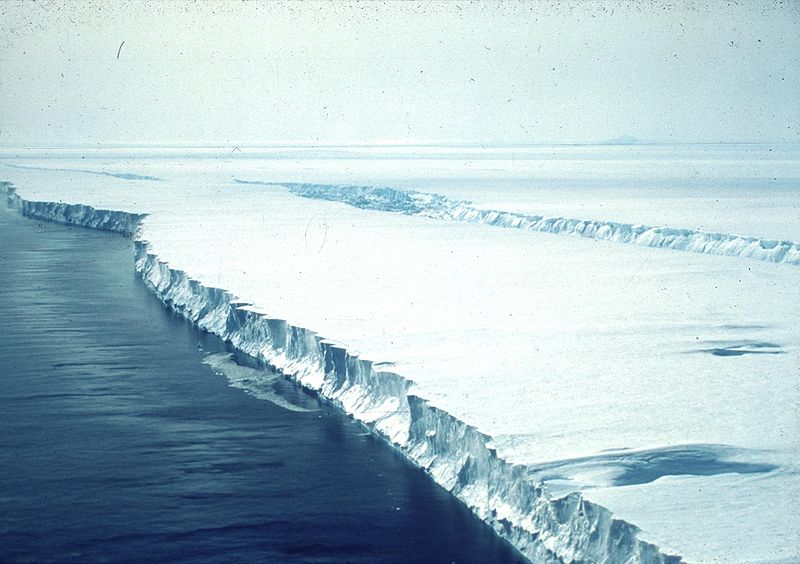Science News
Thinning Antarctic Glacier
June 22, 2010

“Thinning ice in West Antarctica, resulting from acceleration in the flow of outlet glaciers, is, at present, contributing about 10% of the observed rise in global sea level,” according to a new study published in Nature Geoscience.
A few years ago, scientists realized that Pine Island Glacier was a major source of that melting ice. (The BBC has a good map showing the location of Pine Island Glacier here, and a Google Earth forum posting displays amazing visualizations of calving from the glacier here.) But what is causing the rapid retreat of the glacier?
To figure this out, researchers launched an autonomous underwater vehicle, or Autosub, designed to dive deep and travel far beneath Pine Island Glacier's floating ice shelf. With acoustic instruments aboard Autosub, the scientists captured ocean and seafloor measurements, which revealed a ridge almost 1,000 feet high on the sea floor.
Pine Island Glacier was once sitting on top of this underwater ridge, which slowed its flow into the sea. However, due to warm ocean water, in recent decades it has thinned and disconnected from the ridge, allowing glacier ice to move more rapidly from the land into the sea. (Check out a graphic at Discovery News showing this process.)
Lead author Adrian Jenkins, PhD, of the British Antarctic Survey, said “The discovery of the ridge has raised new questions about whether the current loss of ice from Pine Island Glacier is caused by recent climate change or is a continuation of a longer-term process that began when the glacier disconnected from the ridge.
“We do not know what kick-started the initial retreat from the ridge, but we do know that it started some time prior to 1970. Since detailed observations of Pine Island Glacier only began in the 1990s, we now need to use other techniques such as ice core analysis and computer modeling to look much further into the glacier’s history in order to understand if what we see now is part of a long term trend of ice sheet contraction. This work is vital for evaluating the risk of potential widespread collapse of West Antarctic glaciers.”